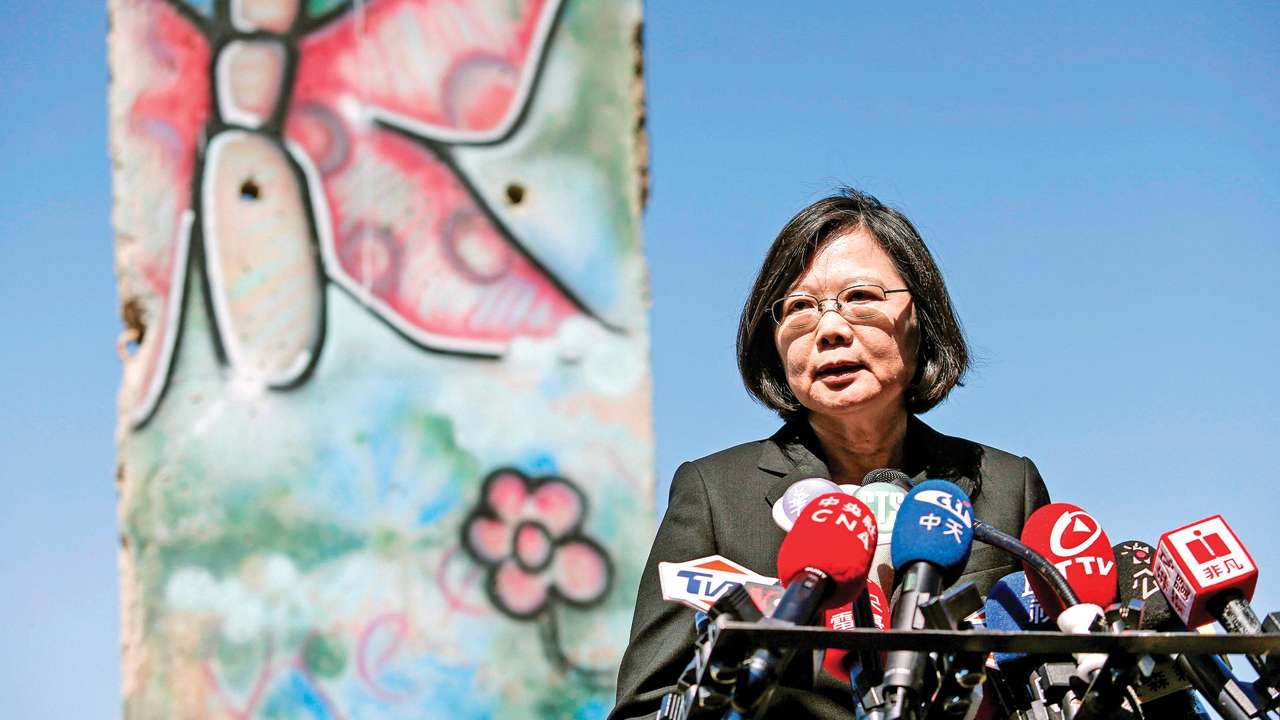
There has been an appreciable increase in Cross-Strait tensions between the People’s Republic of China (PRC) and Taiwan in recent months. The “trade war” initiated by the US against China and which threatens to further accelerate China’s economic slowdown if not derail its rise, has come in the midst of this growing tension.
In addition, the Trump Administration broke with recent practice and, ignoring Beijing’s protests, in a seeming suggestion of support allowed Taiwan President Tsai Ing-wen to stop over in Los Angeles on August 13, 2018 where she was greeted by three US Congressmen. Tsai Ing-wen also gave a speech at the Ronald Reagan Presidential Library, the first ever made by any President of Taiwan during their transit stays. This undoubtedly triggered memories in Beijing of US President-elect Donald Trump’s 10-minute conversation with Taiwan President Tsai Ing-wen on December 2, 2017. Well-known Chinese Professor of International Relations at Renmin University in Beijing, Shi Yinhong, at that time observed that Trump was sending a “very clear” message. He asserted that “the US President-elect hates China and will encourage Tsai to resist pressure from the mainland.”
China has steadily ratcheted pressure on Taiwan since the election victory in 2016 of the pro-Independence Democratic Progressive Party (DPP) and election of President Tsai Ing-wen. Signalling his insistence on Tsai Ing-wen endorsing the “1992 consensus”, Chinese President Xi Jinping spelt out three tough new propositions at the National People’s Congress (NPC) session in Beijing in March 2016 and warned that China “will resolutely stop any form of behaviour having to do with Taiwan independence or separatism and safeguard the country’s sovereignty and territorial integrity.” While careful not to give Beijing offence, in her inaugural speech on May 20, 2016, Tsai Ing-wen avoided any indication that she endorses the “1992 consensus”.
Reports persistently circulating in China for at least the past three years claim that Chinese President Xi Jinping is keen on effecting Taiwan’s “reunification” with the mainland before the end of his term. They also said that a number of working groups had been set up to examine all aspects of a reunification. Whether that time limit has got extended after China’s 19th Party Congress is unclear, but Xi Jinping is applying all the principles of the Three Warfares or “Sanzhong Dafa” (Psychological, Propaganda and Legal).
He has resumed efforts to shrink Taiwan’s diplomatic space. The number of countries maintaining formal diplomatic ties with Taiwan is now down to 18 and Taiwan was denied attendance at the World Health Organisation (WHO)’s annual meeting because of Beijing’s objections. The official Global Times on December 25, 2017 called it “the first step to discipline Taiwan independence”. Efforts are simultaneously being made to increase Taiwan’s economic dependence on China by opening greater opportunities for Taiwanese businessmen. China is already Taiwan’s largest trading partner, accounting for more than 30 percent of the island’s total trade. These efforts are accompanied by steps to facilitate travel to the mainland and stepped up activity inside Taiwan by China’s United Front apparatus. In the background is the steadily rising spectre of the possible use of military force.
In December 2016, two academics of China’s Institute of International Studies at Yunnan University published an article describing Cross-Strait relations as probably the world’s tensest geopolitical situation. They added “China is now preparing for a final solution by non-peaceful means, which is the last resort China would prefer to turn to.” An uptick in China’s military activity in the Taiwan Strait and East China Sea has followed. For the first time 45 Chinese Navy warships led by China’s first aircraft carrier Liaoning, carried out a “live-fire” exercise on April 18, 2018 in an area in the Taiwan Strait. China’s People’s Liberation Army (PLA) Daily publicised this “was meant to be check on Taiwan independence.” More recently on June 20-21, another flotilla of 50 warships sailed through the Taiwan Strait. China has also stepped up the pace of production of guided missile
Destroyers – adding one every three months to its Navy’s inventory – and Cushioned Landing Craft for amphibious operations. Chinese Air Force fighter and bomber aircraft have also been flying around the Taiwan island.
Though China using military force is presently unlikely, it is certainly building a capability. If Beijing perceives an opportunity it could well be tempted to force the “reunification”.
The Cross-Strait tension has implications for India too. On April 25, China identified 44 foreign airlines, including Air India, and demanded that they cease listing Taiwan as “a country”. Forty airlines had complied by August 10.
China has independently pursued a robust policy of cartographic aggression and, in the case of India depicts large portions of Indian territory as Chinese. It also continues to compel international organisations to withhold financial assistance to projects in these areas. Instead of caving in to China’s demand India, or at least Air India, should have insisted on a quid pro quo by Chinese airlines flying to India in view also of the draft Geospatial Information Regulation Bill.
The writer is a former Additional Secretary in the Cabinet Secretariat, Government of India and is presently President of the Centre for China Analysis and Strategy. Views are personal.